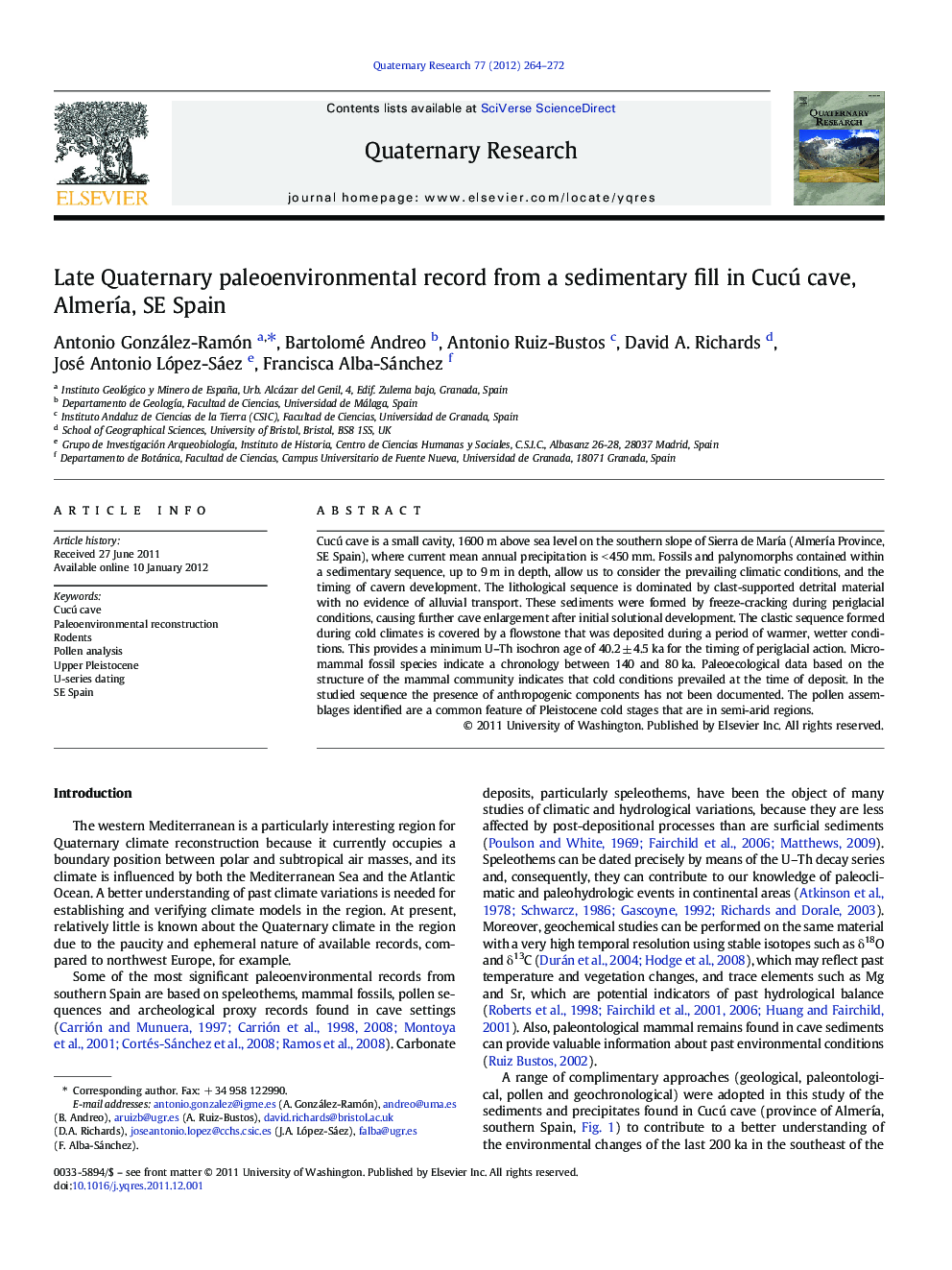| Article ID | Journal | Published Year | Pages | File Type |
|---|---|---|---|---|
| 1045669 | Quaternary Research | 2012 | 9 Pages |
Cucú cave is a small cavity, 1600 m above sea level on the southern slope of Sierra de María (Almería Province, SE Spain), where current mean annual precipitation is < 450 mm. Fossils and palynomorphs contained within a sedimentary sequence, up to 9 m in depth, allow us to consider the prevailing climatic conditions, and the timing of cavern development. The lithological sequence is dominated by clast-supported detrital material with no evidence of alluvial transport. These sediments were formed by freeze-cracking during periglacial conditions, causing further cave enlargement after initial solutional development. The clastic sequence formed during cold climates is covered by a flowstone that was deposited during a period of warmer, wetter conditions. This provides a minimum U–Th isochron age of 40.2 ± 4.5 ka for the timing of periglacial action. Micromammal fossil species indicate a chronology between 140 and 80 ka. Paleoecological data based on the structure of the mammal community indicates that cold conditions prevailed at the time of deposit. In the studied sequence the presence of anthropogenic components has not been documented. The pollen assemblages identified are a common feature of Pleistocene cold stages that are in semi-arid regions.
